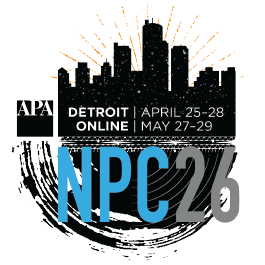Monday, April 15, 2019 from 1 p.m. - 2:15 p.m. PDT
Location: 3014
LEARNING OUTCOMES
- Understand the basics of quantitative scenario planning.
- Process how two regional agencies have applied quantitative scenario planning.
- Identify planning challenges for which quantitative scenario planning is helpful.
MORE SESSION DETAILS
Demographic patterns, such as migration trends and household formation, often form the base of regional plans. From these patterns, components of economic growth are better understood and resource consumption can be proactively addressed. Demographic data are often projected into the future based on a number of inputs, such as demographic data from the past. However, the past may not paint an accurate picture of the future. Treating projections as reality can have damaging consequences for allocating resources effectively and efficiently.
In order to respond dynamically to unknowns in the future, scenario planning can be used as a technique to establish multiple plausible situations that may come to pass. By designing for not one future situation but multiple, organizations can respond to needs in a more adaptive fashion. Quantitative scenario planning quantifies the demand side (e.g., demographic patterns) and supply side (e.g., resource allocation), specifying the mathematical relationship between the two.
The Metropolitan Area Planning Council (MAPC) of the Boston metro area and the Chicago Metropolitan Agency for Planning (CMAP) have built or adapted their own quantitative models, enabling them to improve the quality of dialogue and approach policy and planning in a more comprehensive, responsive, and adaptive way. Learn more about the benefits of scenario planning.
Session Speakers

Elizabeth Schuh
Speaker
Chicago Metropolitan Agency for Planning
Chicago, IL

Janae Futrell, AICP
Organizer and Speaker
Civic Sphere
Antwerp, Flanders

Timothy G. Reardon
Speaker
Metro Area Planning Council
Boston, MA
Activity ID: NPC198149

